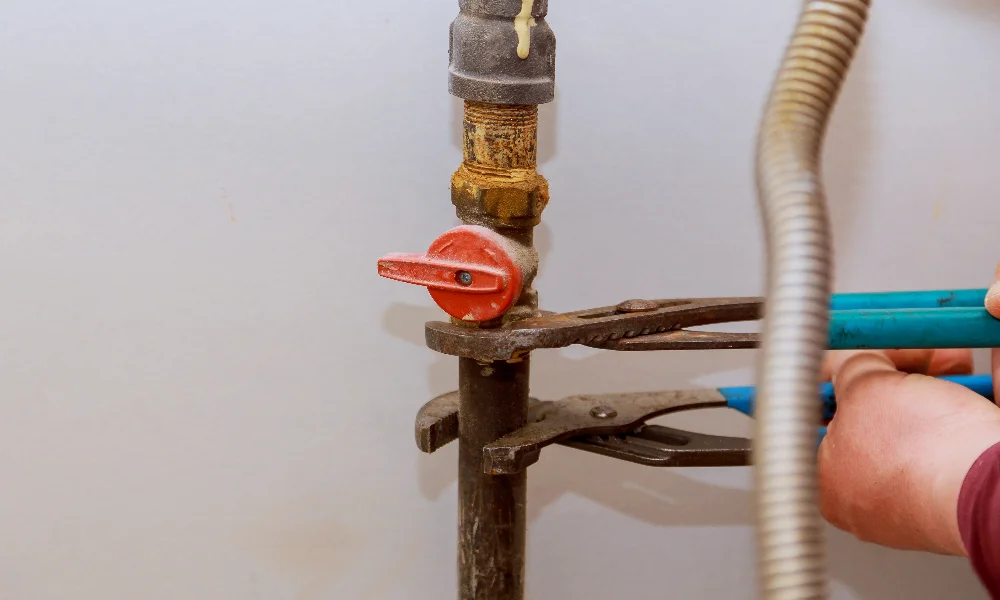
Natural gas powers many essential appliances in your home—from water heaters and stoves to furnaces and dryers. While it’s a convenient and reliable source of energy, it can also be dangerous when things go wrong. That’s why every homeowner should know how to turn off gas line systems safely and correctly.
Whether you’re preparing for a home renovation, responding to a suspected leak, or simply doing preventative maintenance, this guide will help you understand every part of the process, including the location of the gas line shut off valve, what tools to use, when to turn it off, and—just as important—when not to.
Can I Turn Off My Gas Line?
Yes, you can—and sometimes should—turn off your gas line. But this isn’t something to take lightly. It’s not like flipping a light switch. Gas is flammable, and the process should always be handled with care.
Before reaching for a wrench, assess the situation. Understanding when it’s safe—and when it’s not—can make all the difference.
When It's Safe to Turn Off the Gas
There are times when turning off gas line valves yourself is the best course of action.
In Emergencies
If you hear hissing sounds, feel lightheaded, or smell that familiar rotten egg odor (added by gas companies to help detect leaks), it may signal a leak. If it’s safe to do so, immediately shut off the gas using your gas line shut off valve. But remember, only approach the valve if you’re sure there’s no immediate danger.
When Performing Gas Line Maintenance
Planning to replace a gas stove? Installing a new gas dryer? In both cases, it’s essential to turn off the gas before you begin. This prevents accidental gas flow while you work. Knowing how to shut off gas line systems during maintenance is a basic but crucial home skill.
When Not to Turn Off the Gas Line
Sometimes, trying to shut off the gas yourself is a mistake—one that can put your safety at risk.
If You Smell Gas
You might think turning off the valve is the right step, but it’s not, especially if the smell is strong. Leaking gas can ignite with a tiny spark, including static from your clothing or even the flick of a light switch. Leave the home immediately, avoid using electronic devices, and call your utility provider or 911.
If You're Not Sure How to Operate the Valve
A stuck or rusted valve isn’t something to experiment with. If you’re unsure which direction to turn, or the valve looks worn or broken, don’t risk it. Let a licensed plumber or technician handle the job.
How to Turn Off a Gas Line
Now, let’s look at how to turn off gas line supply correctly, step by step. It’s simpler than you might think, as long as you’re prepared.
Identify the Gas Shut-Off Valve
The first thing you need to do is find the valve.
Where Is the Gas Shut-Off Valve Located?
For most homes, the gas line shut off valve is located just outside the house, next to the gas meter. It’s usually a rectangular or round handle connected to a pipe coming up from the ground. In apartments or condos, you may have a separate shut-off valve for your unit.
Types of Gas Shut-Off Valves
There are a few different types:
- Manual valves – These are turned with a wrench or tool and are the most common.
- Ball valves – Found on some newer homes; these also require a quarter-turn to close.
- Excess flow valves – These restrict gas flow automatically during high-pressure leaks.
- Seismic shut-off valves – Triggered by earthquake-level movement, usually in certain regions.
Steps to Turn Off the Gas Line
1. Locate the Gas Meter
Go outside and find your gas meter. It’s usually near the front or side of the home, often near your electric meter. The shut-off valve will be right there.
2. Turn the Valve to the Off Position
Using a wrench or specialized gas shut-off tool, turn the valve a quarter turn (90 degrees). When the valve handle is perpendicular to the pipe, the gas is off. If it’s parallel, it’s still on.
3. Confirm the Gas is Off
After turning the valve, check the gas meter dial. If it’s no longer moving, you’ve successfully shut off the flow. You can also test by turning on a gas appliance—if nothing happens, the line is off.

Tools Used to Shut Off the Gas Line
Having the right tool on hand is half the job. Don’t wait for an emergency—keep one in a known, accessible location.
Wrench or Spanner Tool
A simple adjustable wrench (12-inch is ideal) can turn most manual gas valves. If you only buy one tool for this task, make it a wrench.
Specialized Gas Shut-Off Tool
This tool is inexpensive and designed specifically for turning off gas line valves quickly and safely. Some even come with additional features like pry ends or flashlight mounts for emergencies.
How to Tell if a Gas Line Is On or Off
Not sure if your line is active? Here are the signs to check.
Signs That Indicate the Gas Line is On
Gas Meter Reading
The most apparent sign is movement in the gas meter. If the numbers or dial are spinning, gas is flowing.
Smell of Gas
If you detect a faint gas odor near appliances or pipes, the line is still on—or worse, leaking.
Sound of Gas Flowing
Put your ear close (but not too close) to the gas appliance or pipe. A faint hissing or whooshing sound can mean gas is running through.
Safety Tips for Turning Off the Gas Line
Playing it safe is always the best move when dealing with gas. Here’s what to do—and what not to do.
Do's When Turning Off Your Gas Line
Always Use the Correct Tools
Don’t improvise. Avoid tools that can damage the valve or cause sparks.
Turn Off the Gas Slowly to Avoid Damage
A quick or forceful turn might damage the valve or pipe threads. Steady hands win here.
If in Doubt, Contact a Professional
Even if you’ve done it before, every situation is different. If something feels off, call an expert.
Ensure the Gas Shut-Off Valve is Fully Turned Off
Half-on is a hazard. The valve must be fully perpendicular to the pipe.
Confirm the Gas Is Off by Checking the Meter
Don’t rely on appliance behavior alone. Always check the meter for confirmation.
Don'ts When Turning Off Your Gas Line
Forcing the Valve if It's Stuck
If the valve won’t turn easily, stop. Forcing it can cause cracks or breakage.
Attempting to Turn Off the Gas if You Smell Gas
That’s not the time to be a hero. Evacuate first and call for help.
Relying Solely on the Smell of Gas to Check for Leaks
Not all gas leaks are easy to detect. Use tools like a gas detector or call in a pro.
Wally Blanton: Your Gas Line Plumber for Repairs in Spring Grove, IL
Knowing how to shut off gas line systems is essential, but sometimes, the best move is to let professionals handle it.
If you live in or near Spring Grove, IL, and need help with gas line repairs, leak inspections, or installing a new gas line shut off valve, look no further than Wally Blanton Plumbing & Sewer. They’ve built a reputation on trust, safety, and top-notch service.
Don’t leave gas safety to guesswork. Whether it’s a minor repair or a major emergency, Wally Blanton’s team is ready to help quickly and professionally.
Visit wbplumbingsewer.com or call now to schedule your gas line service. Protect your home. Call Wally Blanton Plumbing & Sewer today.
